All about the heck

Latches are designed to lock doors and gates. There are different types of heck on sale. In the article, we will consider what they are and learn about their classification.
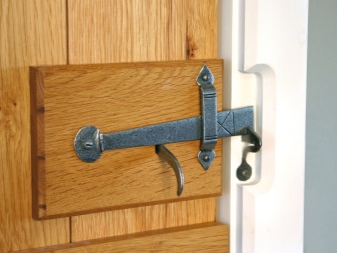
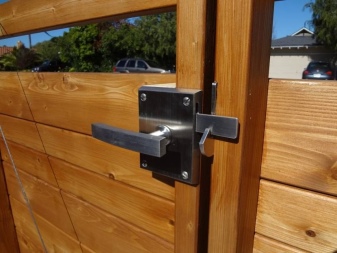
What it is?
The most detailed explanation can be found in Dahl's Explanatory Dictionary. The term has several meanings - from a door lock (zippers, stitches) to a bracket with a lever passed through the doors, the purpose of which is to raise an iron strip that stops the opening of the entrance. In the device of the unit - a way to stop or hold the further movement of the machine.
In some sources, this term is given in a narrow sense - a type of door lock. Synonyms for it are the words "latch" and "latch". GOST, adopted in Soviet times and currently in force, regulates the design and dimensions for core boxes and centrifugal molds.
Like a lock that locks a gate or a wicket used for a door, a latch can have variable dimensions, principle of operation and material of manufacture. Some incompetent sources confuse the concepts of latch, bolt and door trim on the basis that they are locking devices. But there are some differences in the arrangement:
- bolt - with a sliding type latch, with a crossbar entering a specially made hole;
- the door strip is put on the stops and closed with an arc lock through the shackle;
- an overhead-type latch moves into a loop (it can be in the form of a rod or plate, fixed on the base);
- the bolt on the device - the same valve, but large-scale and durable, often with a spring mechanism;
- the heck is similar to a bolt and a latch, the main difference is in the principle of operation - the metal plate is sent into the socket under the action of a spring.
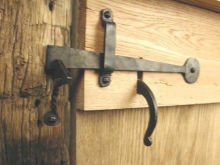
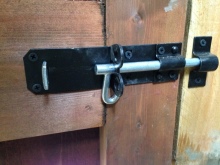
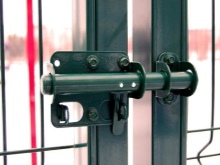
To distinguish the heck from the latch, it is enough to study the mechanism of action. Both devices have a metal plate, but in the valve it is moved by mechanical pressure, and in the latch - by spring pressure. Once in the nest, it is secured with a lever, and the door opens only after manipulation.
The variety of existing types and confusion in terminology often leads to a confusion of the two types of mechanisms. Both of them work to exclude penetration from the outside - when installing devices, it is almost impossible to open the door from the outside. But there is no need to confuse the two, as incompetent authors or ironmongers do. The heck is a more complex and reliable device, despite some similarities in the principles of installation, materials of manufacture and the relatively simple possibility of making it with your own hands.
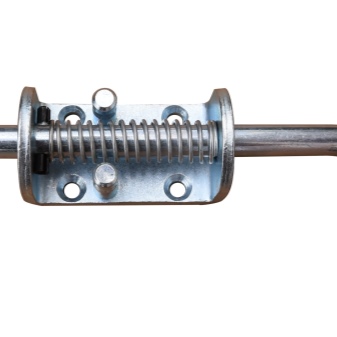
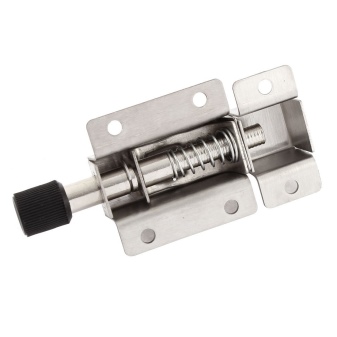
Description of species
Latches for a door, wicket or gate look different, despite their common characteristic - a locking mechanism. You can buy a device in a supermarket with construction goods, in the market, and even make it yourself from scrap materials.
In the existing varieties, not only an amateur, but also a specialist can get confused.
- Consignment note - simple in design or mortise, with the main part of the mechanism hidden inside the door (a wooden panel is optimal for installing a mortise latch in interior doors, especially if they are decorative).

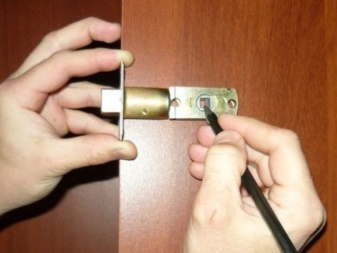
- Standard, with spring - an excellent option for a locking device that conveniently duplicates door locks.The door, closed in this way, cannot be opened from the outside, while the thrown-on hook is easily disabled by strong pressure or lifted with the help of a burglar.
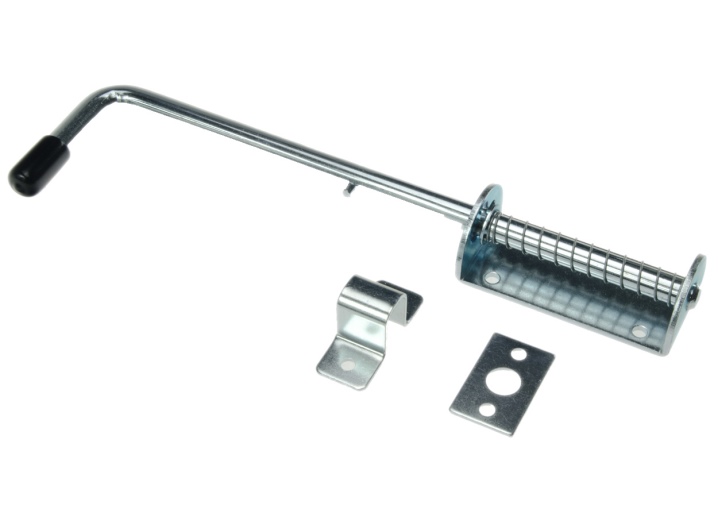
- Swivel ("with a lamb" - in professional slang) Is not a universal term. What these latches have in common is the presence of a pivoting lever that brings the bolt into position. However, a worm or gear mechanism can be used to transmit the force.
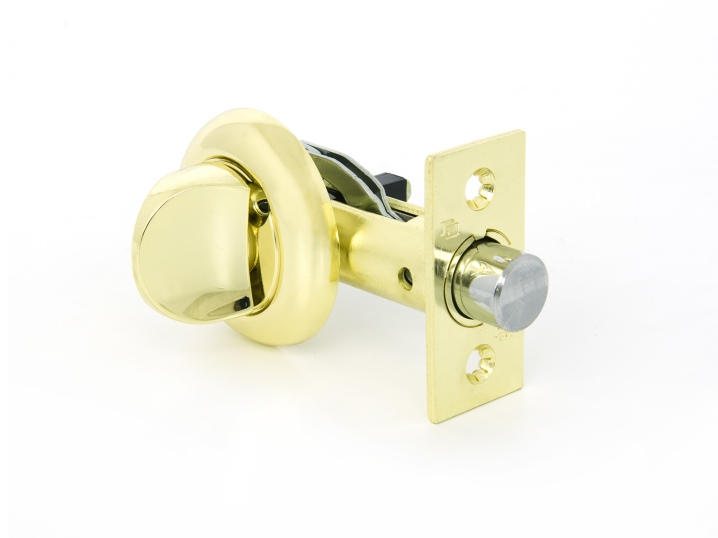
- Deadbolt made of wear-resistant material can be used for gates, wickets and doors.
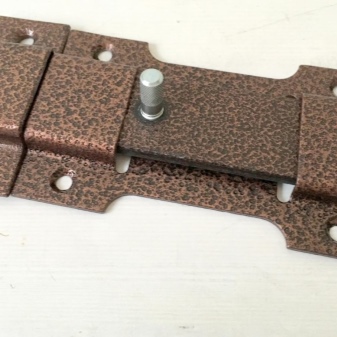
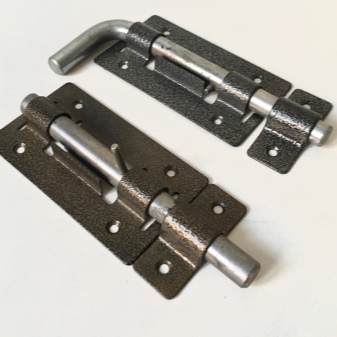
- Gate - with additional insurance - with eyes for a padlock, which is hung when the owners are not at home, or only a gate is used for passage. To thread the crossbar, a mating part is needed - most often a loop of an arbitrary shape.
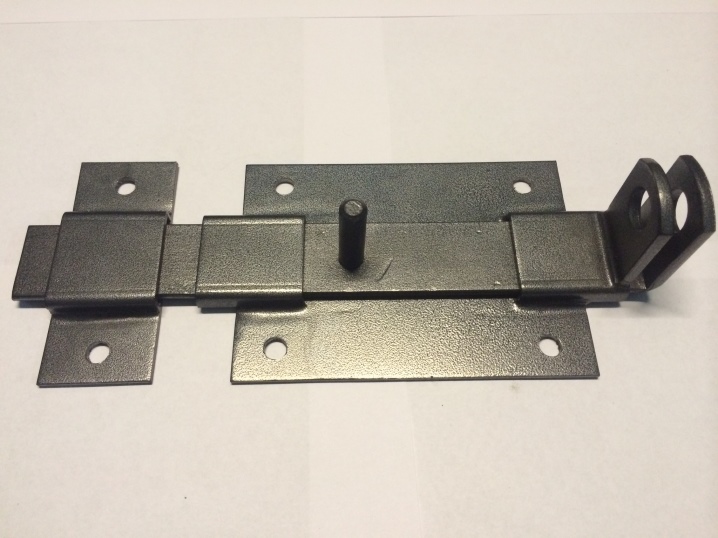
- Electromagnetic works from an autonomous power supply (battery) and requires periodic recharging, but there is also a recharge from the mains. Both types have control from a remote control operating at an individual frequency, which is almost impossible to pick up.
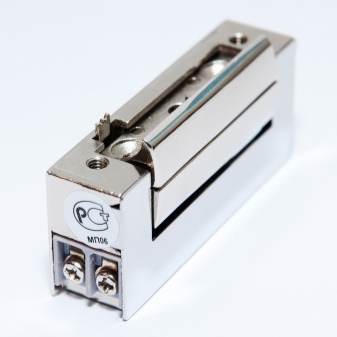
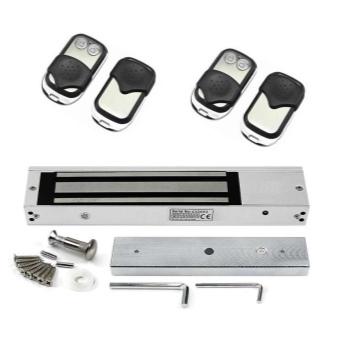
- Electromechanical latch - also a modern look of the heck. An almost full-fledged lock, electronic, in which the bolt is powered by an electric motor. For especially vigilant owners, a lock is produced complete with a latch, on a continuous power supply from the mains.
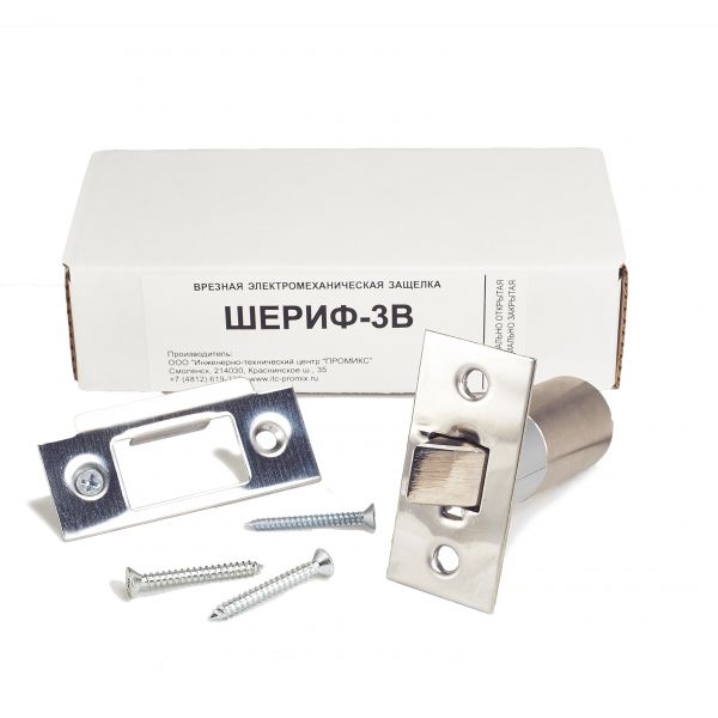
- Unilateral it opens only from the inside of a courtyard or room, but the double-sided one is installed in any place from which it is convenient to use it. Such devices are recommended for gates or wickets made of corrugated board.

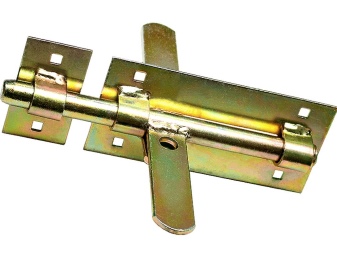
- Automatic can be slammed shut independently and duplicated by manual option and keys.
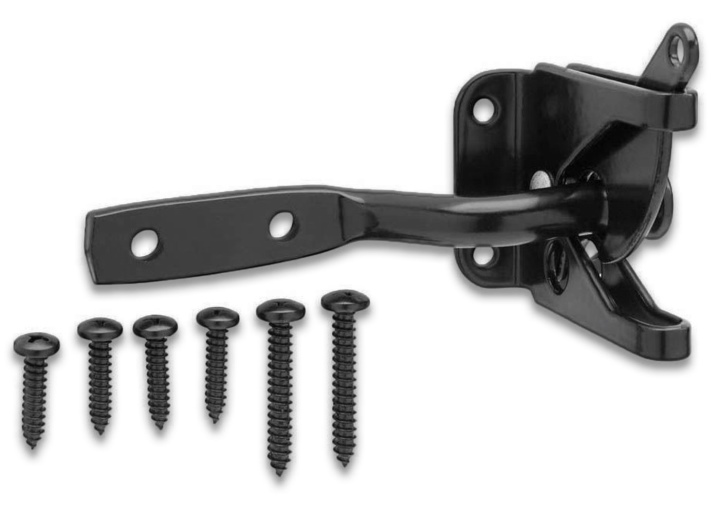
Also, the devices differ:
- by the method of fastening - vertical or horizontal;
- at the place of fastening - to the gate frame, door leaf, at the opening point (secret, which is not visible from the street, is a common addition to the locks of the wicket);
- according to the material of manufacture - from high-quality steel, cast iron, stainless steel, bronze can be used in decorative elements.
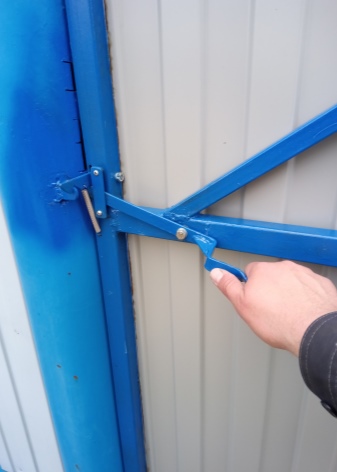
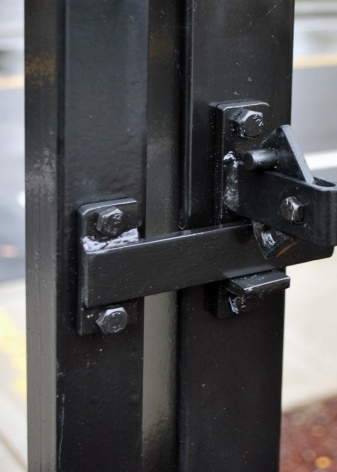
The clasp is mistakenly considered to be a cap with a hook as a simple and functional locking device. There is a self-closing option, with a button instead of the usual bolt. So it is better for a seller in a store or in the market not only to name an interesting word, but to clearly indicate for what purpose the mechanism is being purchased. Otherwise, eyes will run up from the shown variety, and it will be difficult to navigate.
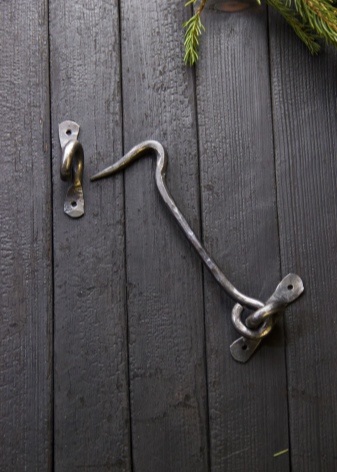
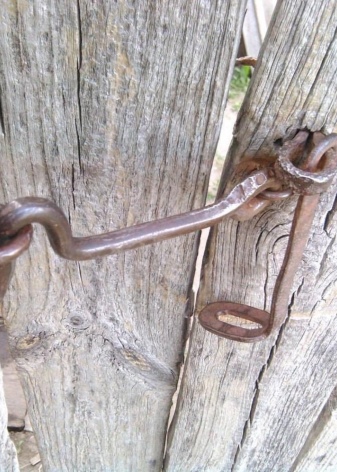
Selection Tips
The first thing to do is to decide on the type, which depends on the place of application (intra-apartment or entrance doors), gates, wickets (in this case, its design features are taken into account - separate or in a frame with a gate). Simplicity or complexity is a matter of personal security considerations. Modern devices with a key fob require power and can break down if handled improperly, simple, lubricated in time - they serve for a long time and protect reliably.
Each of the selected devices has its own dimensional parameters. They also need to be considered when choosing. To do this, you need to decide on the installation site and carefully measure it, then when buying the latch you will know:
- required length - depends on the distance between the leaf and the frame, the dimensions of the door;
- width - may depend on the personal preferences of the user (many believe that reliability and degree of protection depend on this parameter);
- thickness - important when installing a mortise locking mechanism and depends on a similar indicator of the door leaf;
- the weight of the product is determined not only by the material from which it is made, but also by the type of door - metal and oak wood can withstand any weight, but chipboard or PVC involves the installation of only light mechanisms.
Even if you have all the initial data on hand and bought the latest, expensive device from a brand manufacturer, this may not be enough for the expected bonuses.They are obtained only with correct installation and maintenance of the locking device - charging, lubricating, no deformation and careful handling.
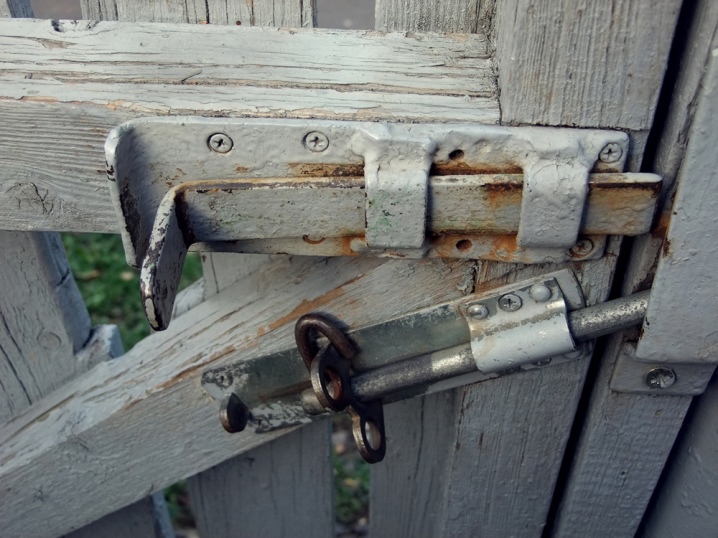
Heck installation methods
Only specialists or people who have already had to deal with such mechanisms can correctly mount an electromechanical or electronic lock. In other cases, the home craftsman can easily cope with the installation of the latch, especially the invoice. But mortise is used only on solid wood doors or on factory metal doors. The algorithm of action is similar at the initial stage, and then depends on the purchased device.
Overhead
Having chosen and outlined the optimal place for installation (it depends on the type of the entrance to be strengthened and the presence of other locking devices), the locations of the fasteners are marked. Then holes are drilled corresponding to the fastening elements (they, in turn, must match the diameter of the holes in the latch plate).
The last stage is the simplest - the latch is fixed in the prepared place with a drill or screwdriver. In the same way, a striking plate is attached (strictly opposite, so that the lever enters it unhindered).


Mortise
The process is distinguished by the choice of the exit and entrance of the latch lever (they are located on the end of the door and on the door frame). Marking is also applied on the door leaf - the location of the striker. Then grooves are drilled in the wood massif - for the body and the outgoing lever. Only then can the striker and housing be pre-secured. The final fixation is carried out after checking the correctness of the stroke.
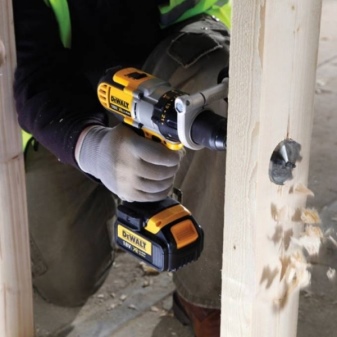
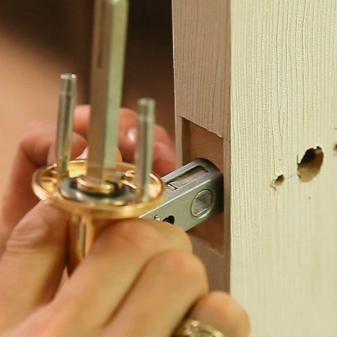
Can you open it from the other side?
There is no universal answer to this question. In the reviews, users do not recommend installing mortise latches, especially on a metal door, if there are elderly people or small children in the family. In order to unlock the door from the outside, closed from the inside, you have to call special services and pay a lot of money for their services. The same goes for simple overhead locking devices.
The use of force is ineffective when choosing a good quality steel latch that is sufficiently firmly attached to the door. If at the same time the locks are closed, it will be very difficult for an intruder to cope with the obstacle. Latches, simple latches and hooks are ineffective. They are best used on interior doors, toilets and bathrooms.
For information on how to put the heck on, see the next video.












The comment was sent successfully.